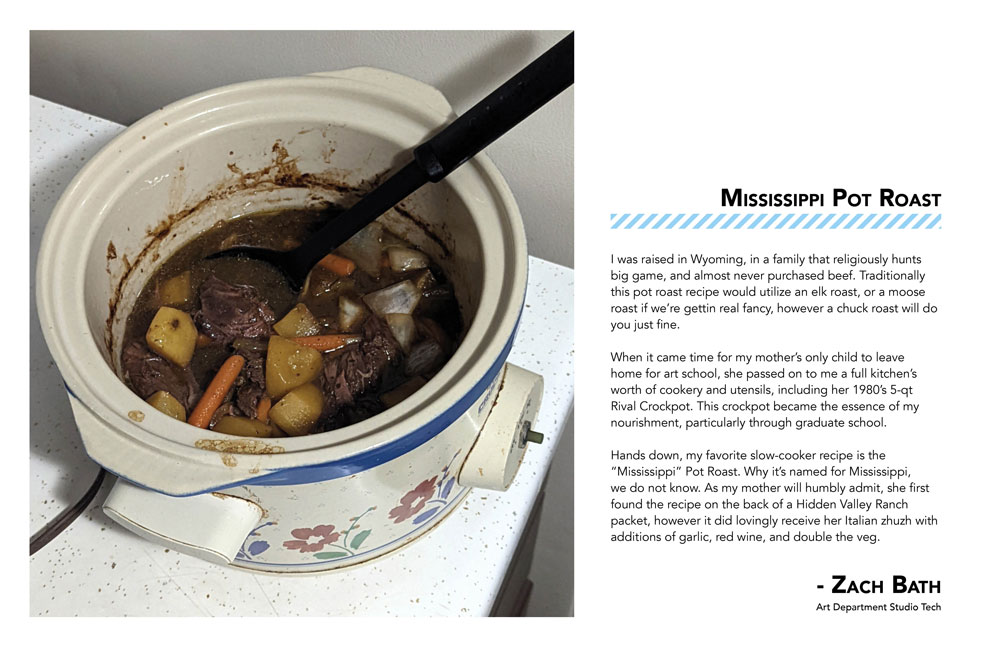Delicious Dishes celebrates the everyday traditions that bind us to family, friends, and community, and the containers that make carrying them out possible.
Many thanks to the 10 members of the College of Wooster community who entrusted us with their stories, recipes, and cherished containers. This project was conceived by Marianne Wardle in consultation with Jodi Robison and Tracy Mathys.
Tracy Mathys facilitated and implemented the project and created the layouts of text, images, and recipes. Installation by Doug McGlumphy.
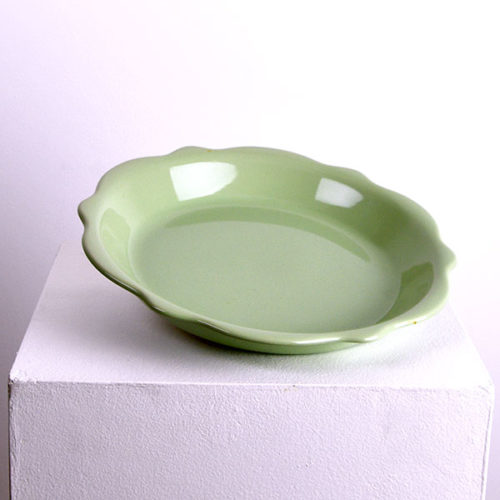
Pasty (Pie Plate)
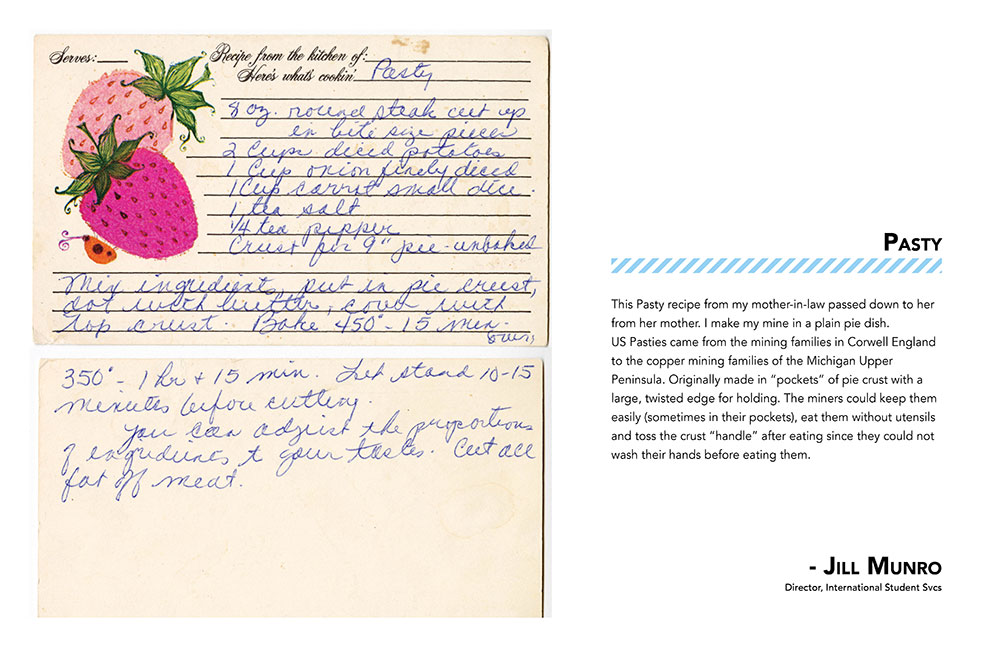
“This pasty recipe from my mother-in-law passed down to her from her mother. I make mine in a plain pie dish. U.S. Pasties come from the mining families in Corwell, England to the copper mining families of the Michigan Upper Peninsula. Originally made in “pockets” of pie crust with a large, twisted edge for holding. The miners could keep them easily (sometimes in their pockets), eat them without utensils and toss the crust “handle” after eating since they could not wash their hands before eating them.”
-Jill Munro-
Director, International Student Services
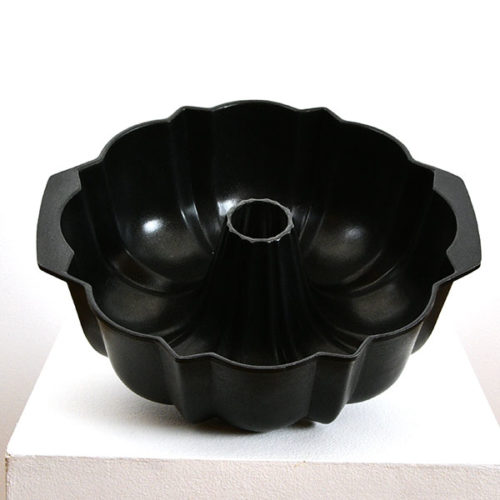
The Green Cake (Pistachio Cake)
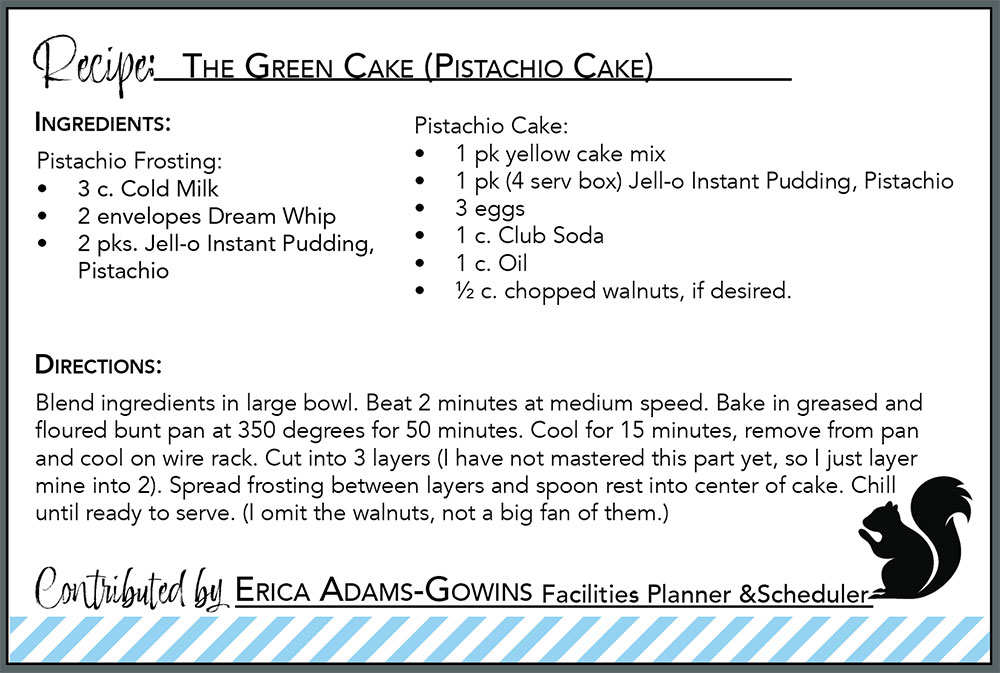
“As a young girl, I would be asked what dessert Granma Karen should make for Christmas or what I wanted to eat for my birthday (St. Patrick’s Day) and my response 99 percent of the time was “The Green Cake.” This was a family tradition to have at holiday dinners growing up and now that I host holiday dinners, I have now taught my son how to make the cake as well.
We lost Granma Karen just days before Thanksgiving in 2020 so this recipe is like still having her with us at dinner. When I was asked to participate in this exhibit, I knew right away The Green Cake was to be my contribution. I hope that, if you try it, it brings you as much joy as it does my family.”
-Erica Adams-Gowins-
Facilities Planner and Scheduler
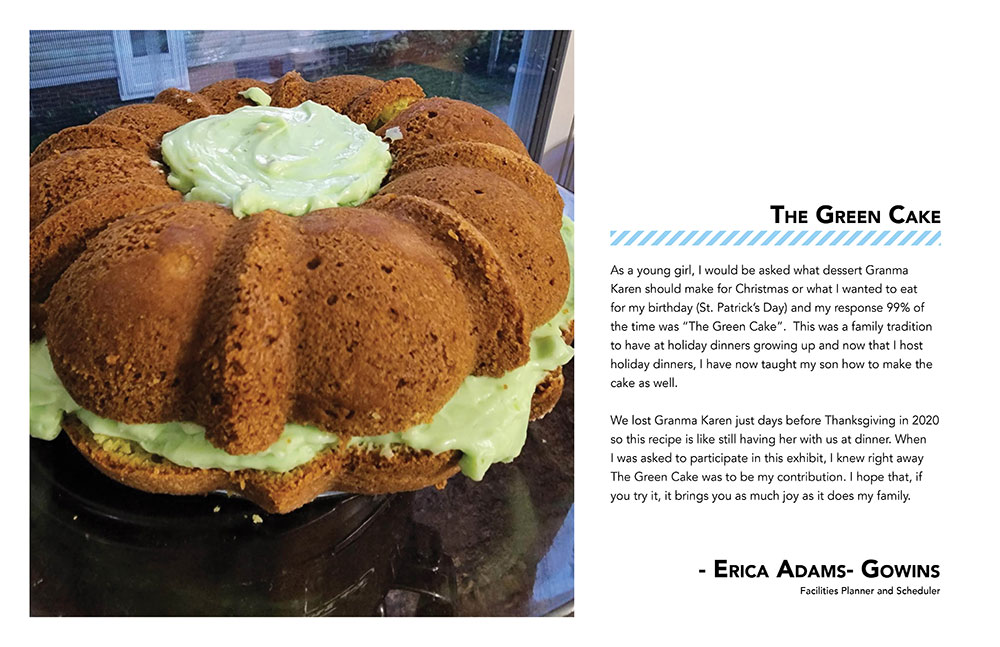
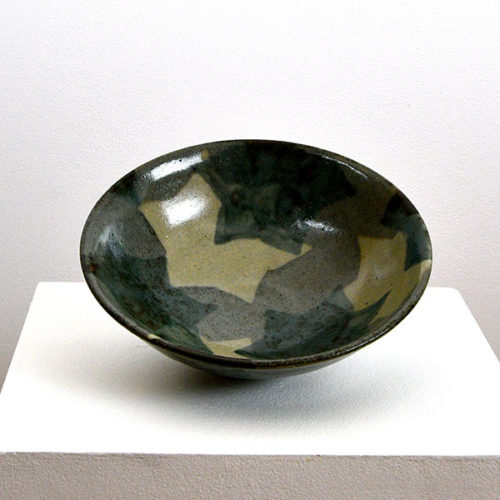
Mid-Summer Apple Sauce

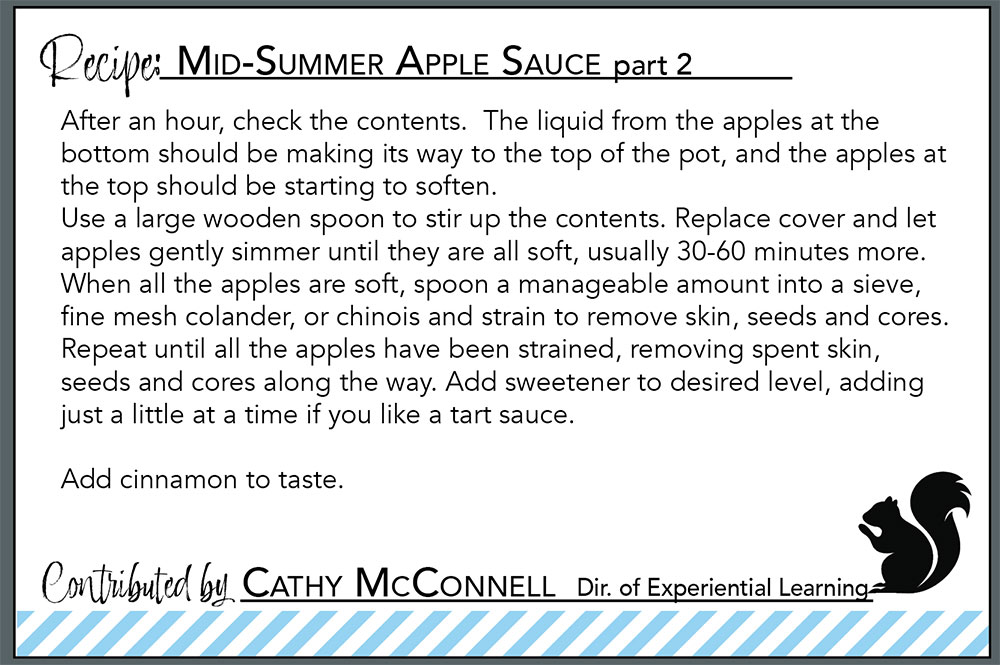
“I was living in Japan in the early 1980s and fell in love with the immense variety of pottery pieces that are used as part of everyday life. I was especially attracted to the folk-art style known as Mashiko-yaki which uses rich hues of indigo, greys, browns, and reds in the glazes. This bowl was one of the first pieces I purchased on a trip to the Mashiko pottery village in Tochigi prefecture. It has survived eleven moves and almost forty years of regular use at our dinner table.”
-Cathy McConnell-
Director of Experiential Learning and Community Engagement
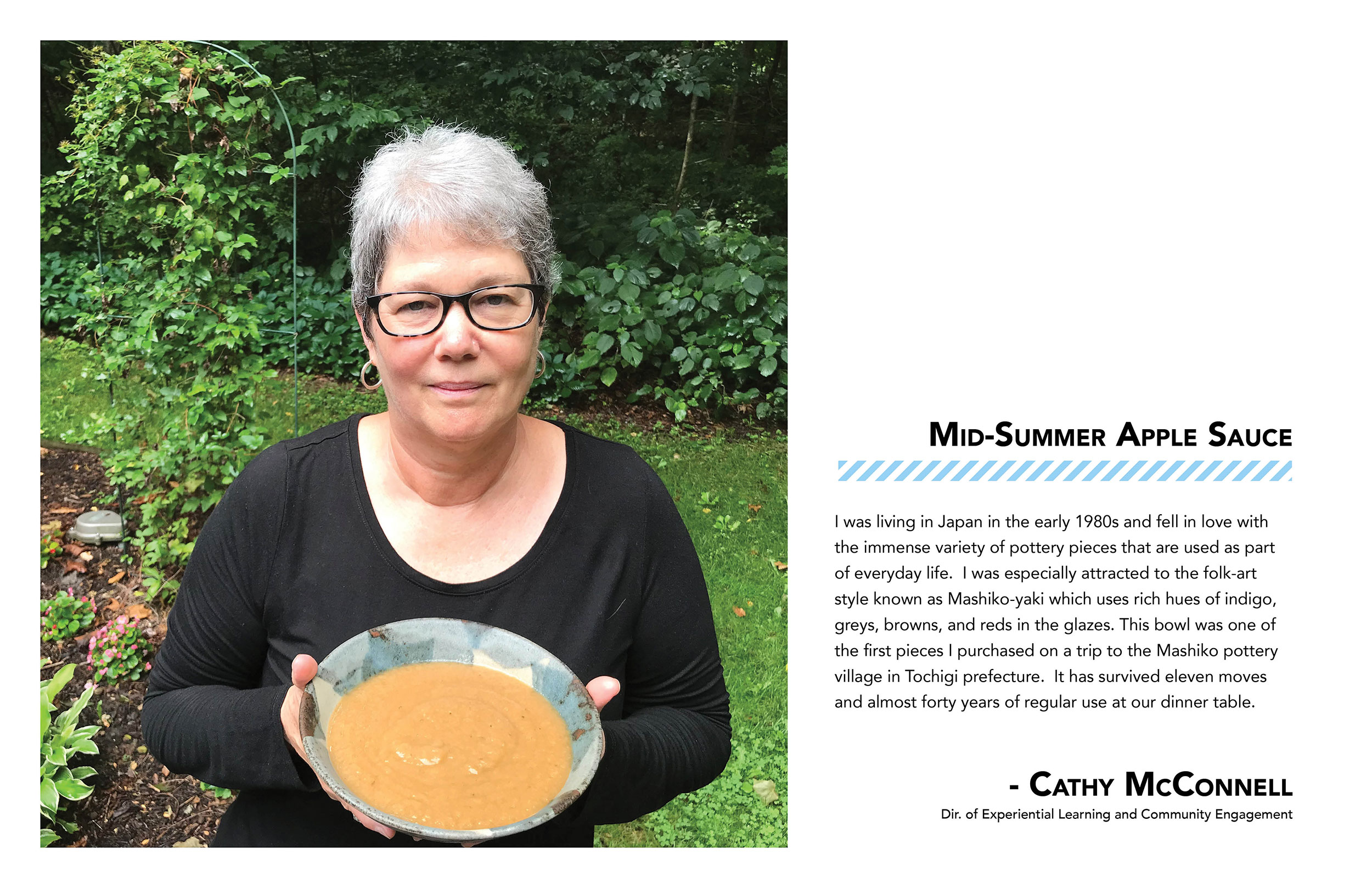
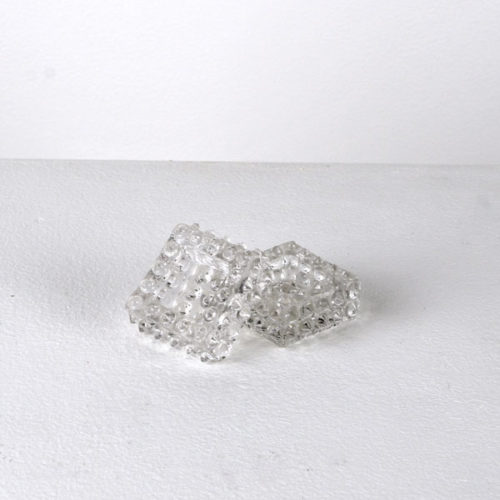
Salt Cellars
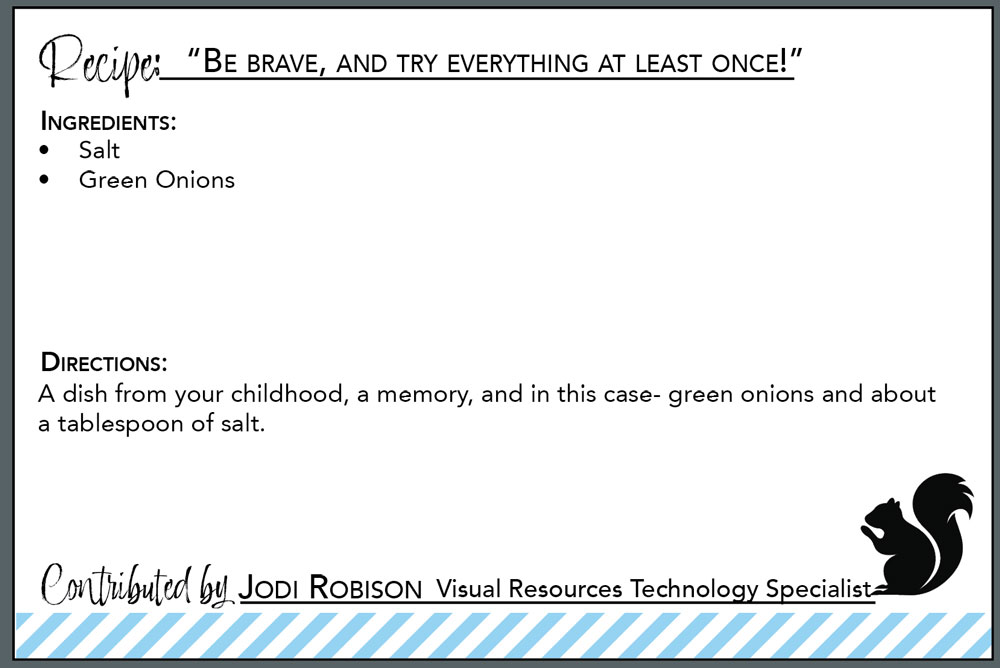
“It’s 5:00 pm on an early summer evening around 1977. I hear mom call me and my sisters to help set the table for “supper.” One of us runs out to the garden to pull a handful of green onions. Another gets the small glass salt cellars from the cabinet and fills them with salt.
Once filled, we place one cellar next to Dad’s plate. The other cellar floats… available for whoever else is brave enough to follow Dad’s lead and eat a raw onion dipped in the salt!
The small glass vessels always felt so special, since they had just that one function and they added a particular flare to our typical Midwestern table. Originally my Great Grandmother’s, my Mom remembers her Dad using them when she was a child.
They now sit on my window sill awaiting those first green onions of the season. They remind me of my Mom, the garden, dinner times of my childhood, of Dad and his perpetual love of peppers and onions, and also to dare to be brave and try everything at least once.”
-Jodi Robison-
Visual Resources Technology Specialist
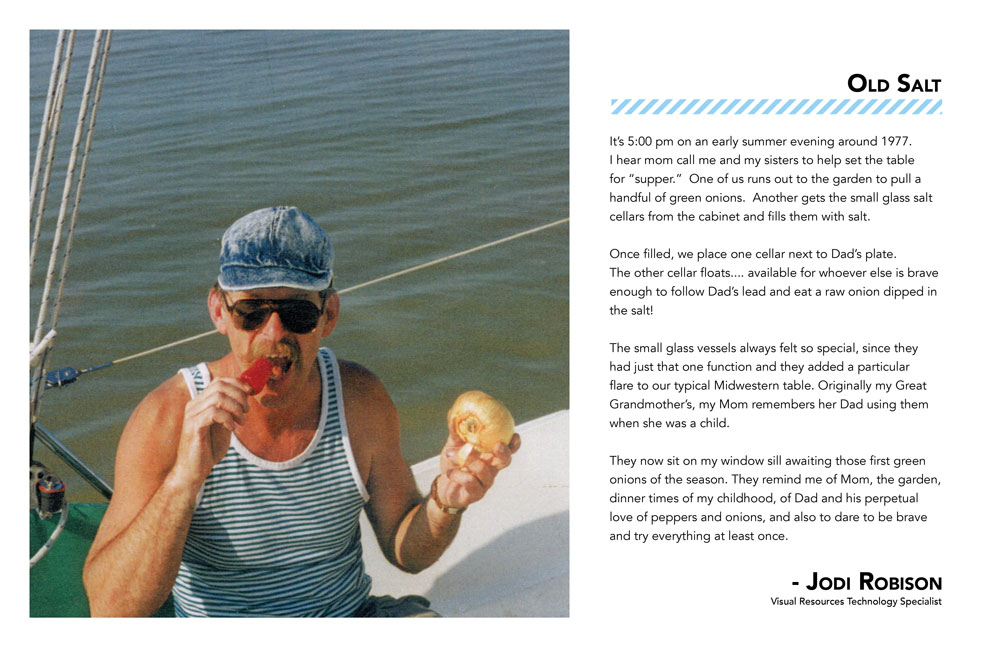
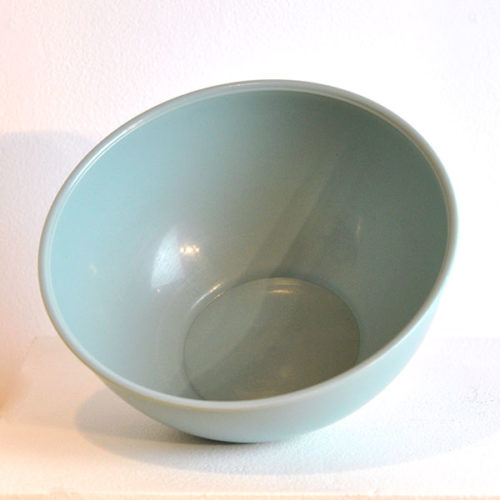
Dinner Club Chicken Curry
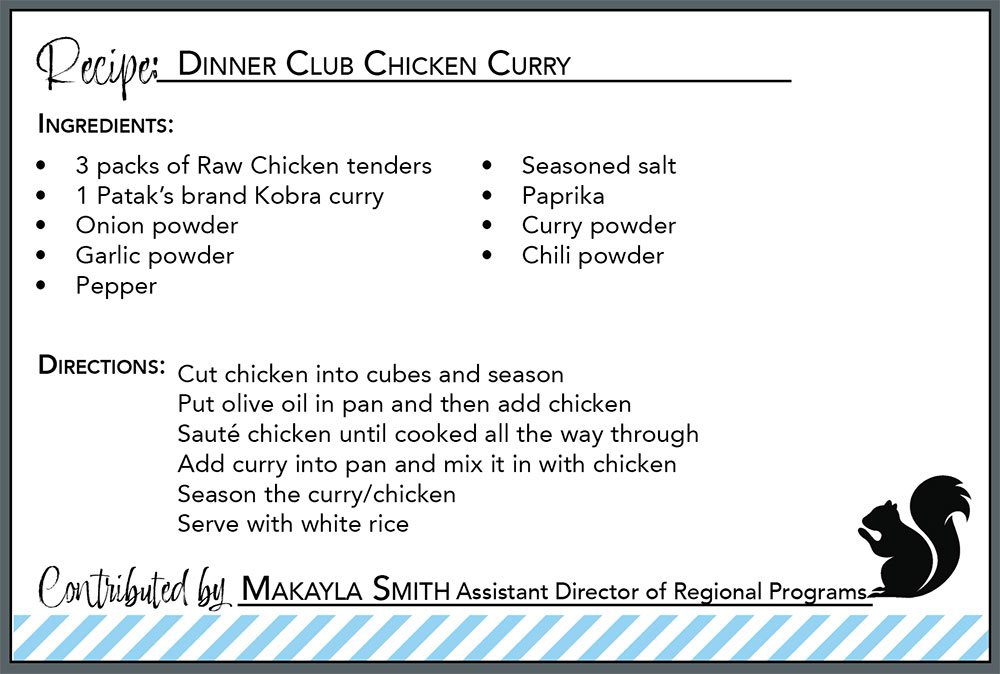
“There once was an idea to bring together a group of people from different backgrounds and walks of life to form a community of recent grads that would help support each other while navigating the highs and lows of post-adolescent life. This idea blossomed into Woo Crew Dinner Club. A Monday night weekly endeavor in which this newly formed group of friends would host each other in their homes and cook the group a meal.
There have been many themes for Dinner Club, including: Chopped Edition, a meal based on a song, a meal paired with a drink… The list goes on, and will continue to go on for as long as their paths and seasons of life cross and connect. The recipe that has been highlighted is important because it was made the night a dear Dinner Club member moved onto a new chapter of their life. It symbolizes an important theme in Dinner Club; Wholeheartedly welcoming others into their community whether for just a Monday night or a full season. Regardless of how long a person experiences Dinner Club one thing is certain: Once a member of Dinner Club, always a member.”
-Makayla Smith-
Assistant Director of Regional Programs
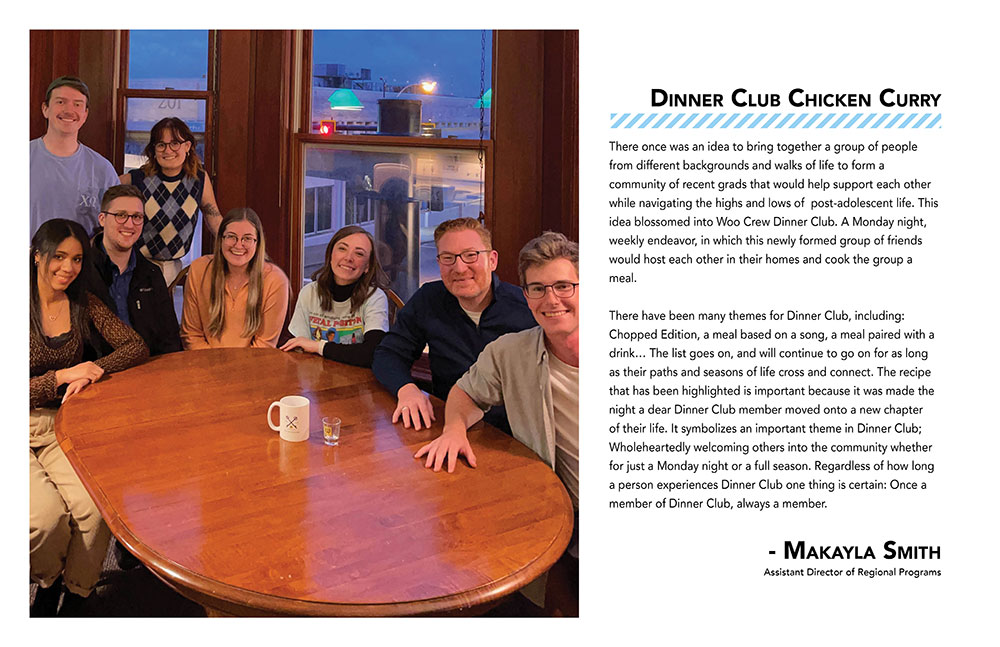
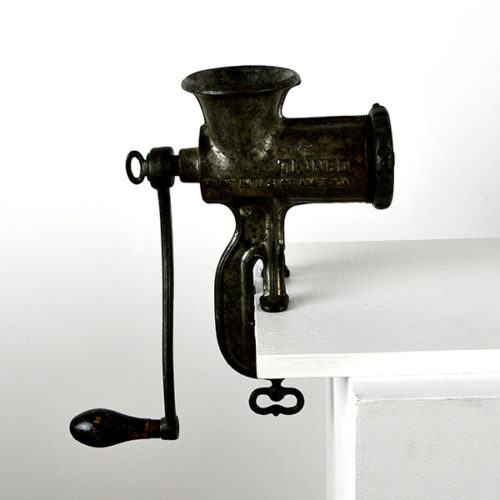
Tillie Friedman's Chopped Chicken Liver
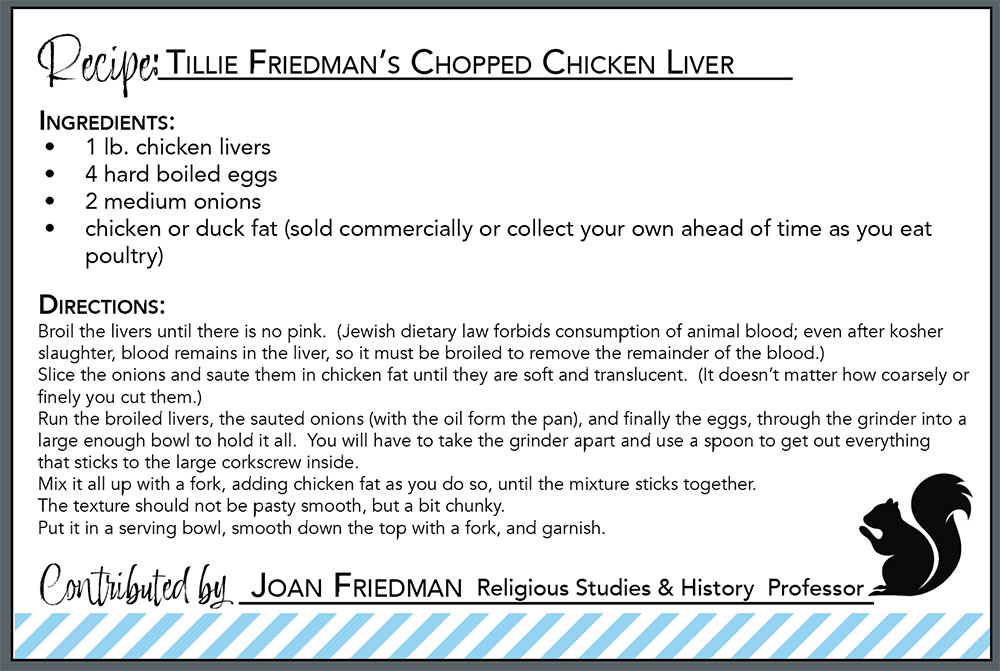
“My grandparents were all immigrant Jews from the “Pale of Settlement,” meaning those provinces of Tsarist Russia where Jews were allowed to reside. My mother’s parents came as young children and were quite Americanized, both high school graduates who spoke English without an accent. My dad’s parents, however, came as teenagers and were far less acculturated. My dad grew up speaking Yiddish at home, and when we gathered weekly at Bobie (grandmother) and Zaydie’s (grandfather) house with the aunts and uncles and cousins and neighbors, the adult conversation was all in Yiddish while we grandkids played and didn’t understand.
My mother had never learned to make the foods from the “old country,” and didn’t like them, so my dad used to stop off at Bobie and Zaydie’s house once a week on his way home from work, and Bobie would give him a “care package” of the delicacies he loved: kishke (stuffed cow’s intestine), helzel (a sort of dumpling made with the skin from a chicken’s neck), gefilte fish (fish skin stuffed with a chopped fish mixture), mohn (poppyseed) cookies, mandelbrot (similar to biscotti), and my personal favorite, gehakte leber (chopped liver). Chopped liver was also a staple of all festive meals – not only all the Jewish holidays, but also Thanksgiving! And my favorite lunch to take to school during the week of Passover was chopped liver on matzah.
Bobie passed away in 1979. In 1990 I bought the same kind of hand turned, clamp-on food grinder that she used in her kitchen in an antique/junk store in Bloomington, Indiana. It has holes about 3/8″ in diameter. I use it once a year – to make chopped liver for our Passover Seder meal. It took a couple of years, but I finally figured out how to make chopped liver that has the same texture and taste as Bobie’s.”
-Joan Friedman-
Religious Studies & History – Professor
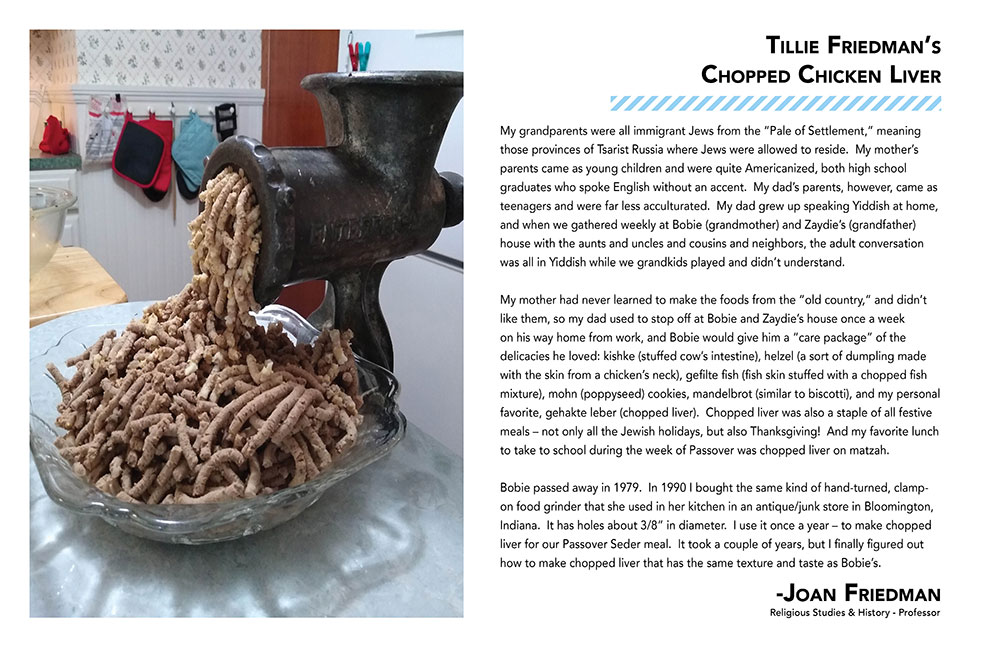
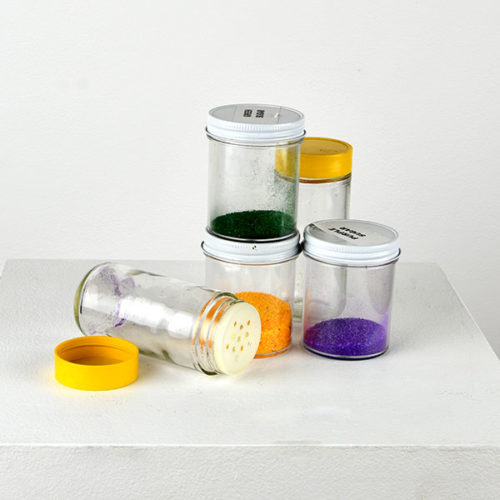
Mamaw's Cut Out Cookies
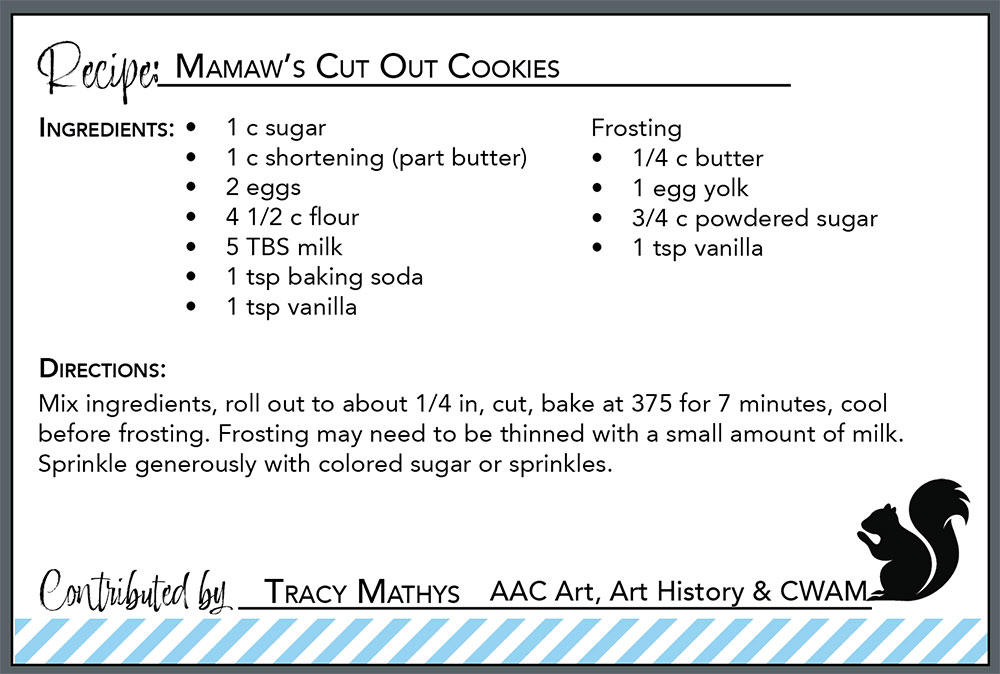
“These cookies are not fancy. No sea salt and dark chocolate, no spectacular royal icing. Just plain white frosting with colored sugar sprinkles on simple cutouts. The thing that makes them special is the woman who used to bake them. My Mother-in-Law was one of the most loving, caring people to walk this earth. Her love language was acts of service; baking cookies to take to work, cheering at a church softball game, sewing snuggly quilts.
Some of our best memories involve baking (and eating) these cutout cookies for every holiday and sometimes just because you need a cookie. While the recipe says that you can use part butter instead of a full cup of shortening, we recommend you stick with the shortening and sprinkle liberally with colored sugar after frosting!”
-Tracy Mathys-
Academic Administrative Coordinator, Art, Art History, and The College of Wooster Art Museum
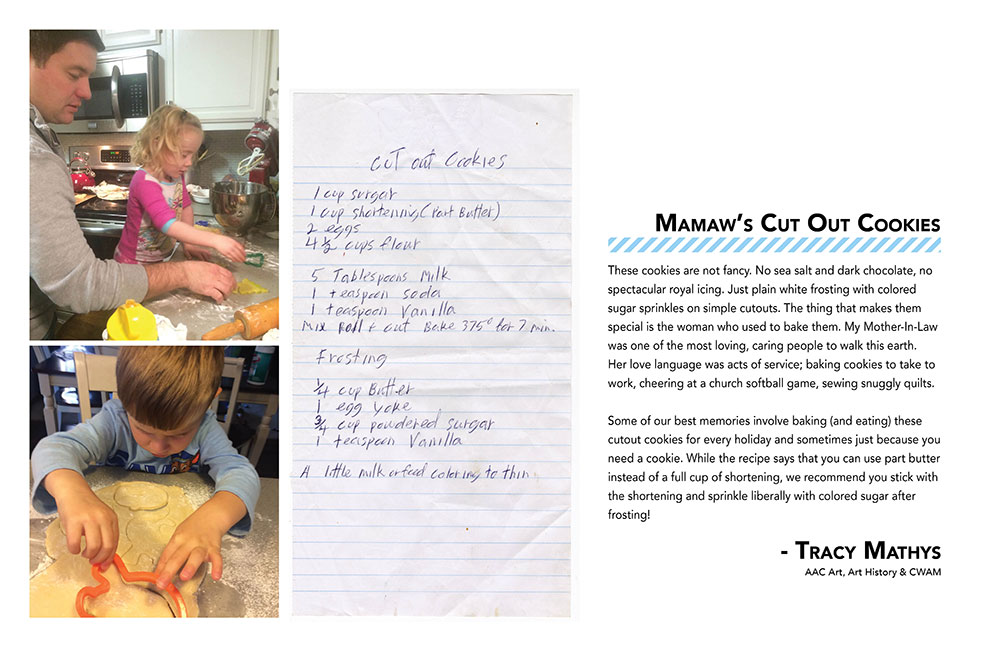
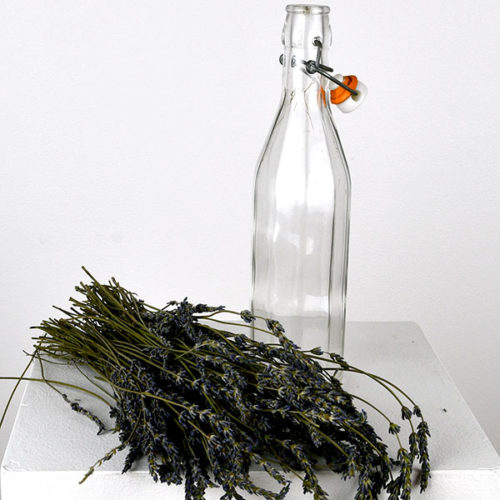
Anytime Lavender Syrup
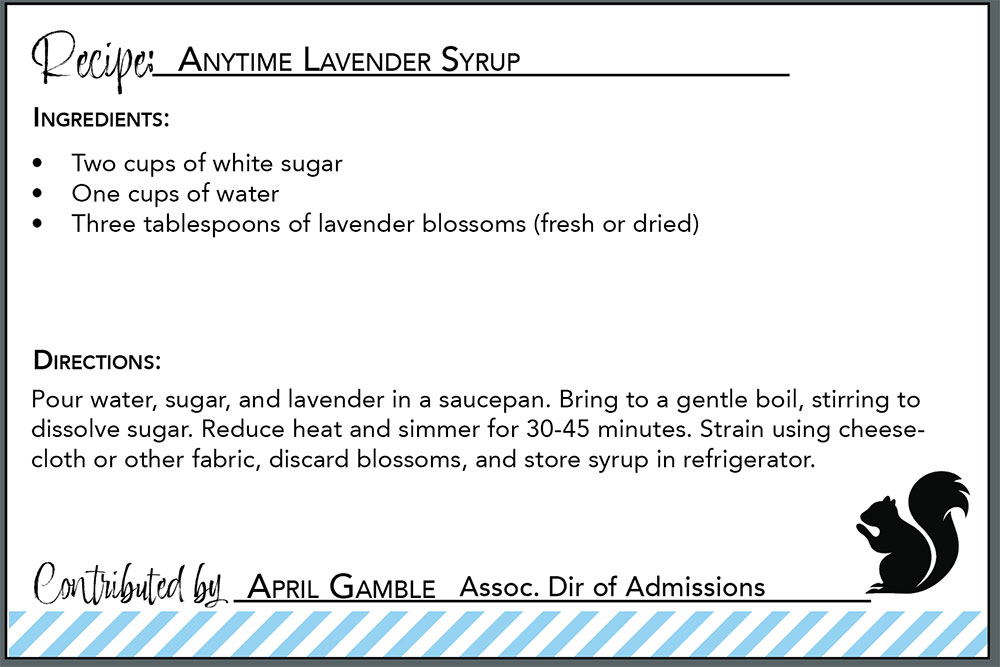
“This syrup is best made with fresh lavender, but dried (make sure it is labeled edible) can be used, too. If you want to make this syrup in June or July, email me (agamble@wooster.edu) and I will share some fresh flowers with you. You can use the syrup to flavor coffee, tea, sparkling water, lemonade, iced tea – really any kind of drink.”
-April Gamble-
Associate Director of Admissions & Coordinator of Counselor Relations
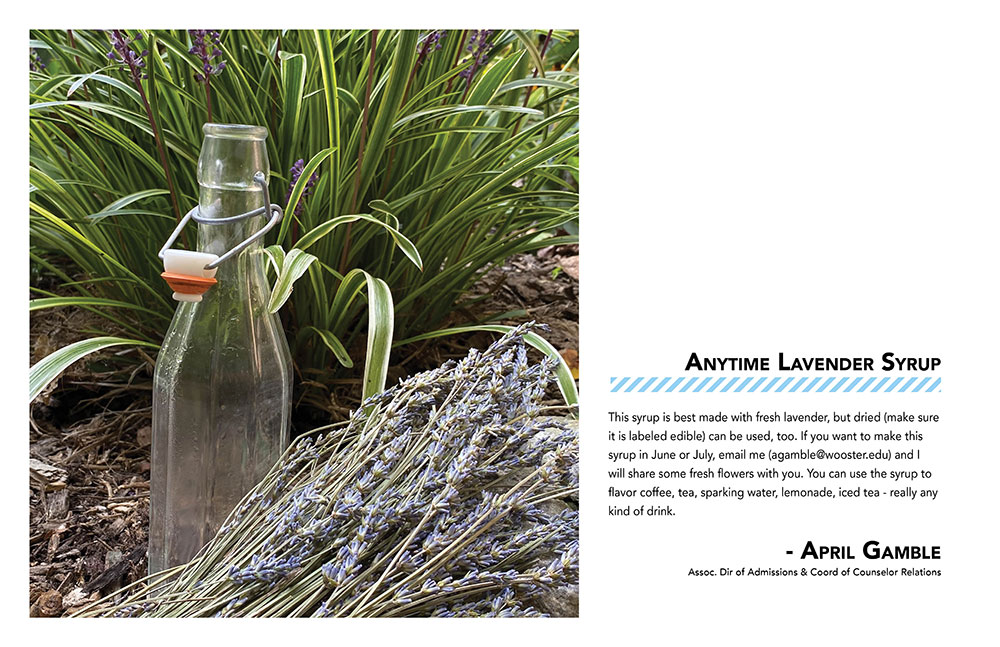
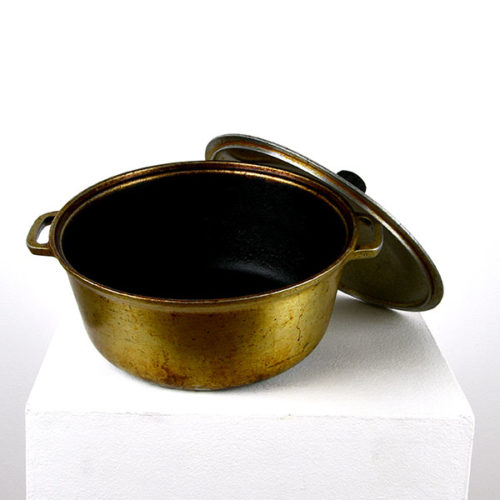
Grandma's Popcorn Pan
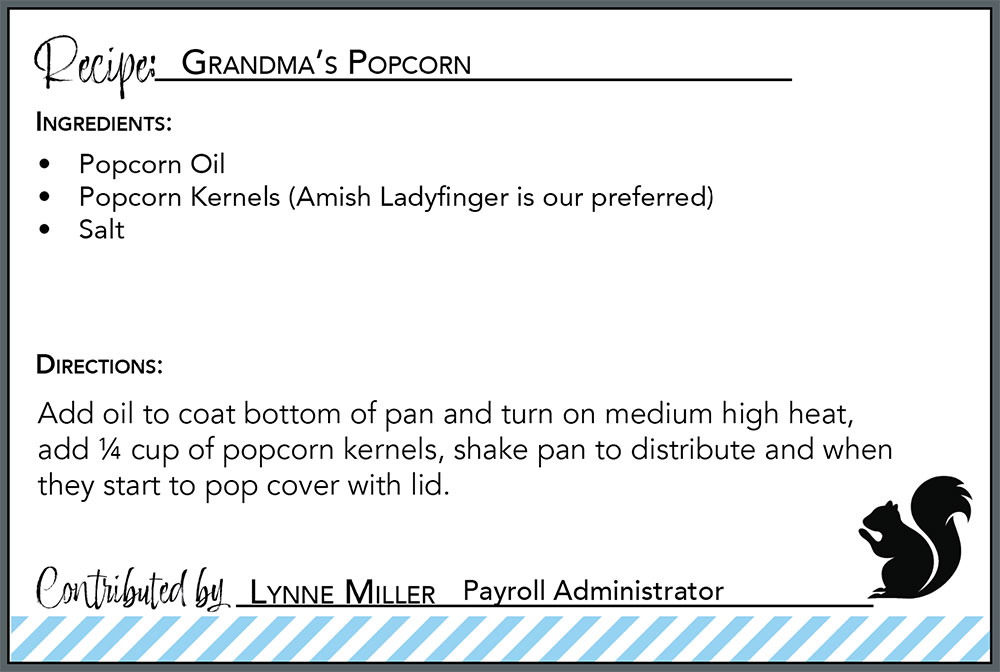
“My grandma lived to be 99 years old. At the age of 19 she had her appendix removed on the farmhouse dining room table. She was married to my grandfather but he was a mean alcoholic and thankfully absent most of the time. She had three children at the age of 36, 37, and 39, and she survived hepatitis in her 60s.
She was an amazing woman, a survivor.
This pan was always on her stove and when we would come to visit she would make a batch of popcorn. This pan reminds me of her strength and ability to withstand the elements of life. It brings my grandma back to me every time I make a batch of popcorn.”
-Lynne Miller-
Payroll Administrator
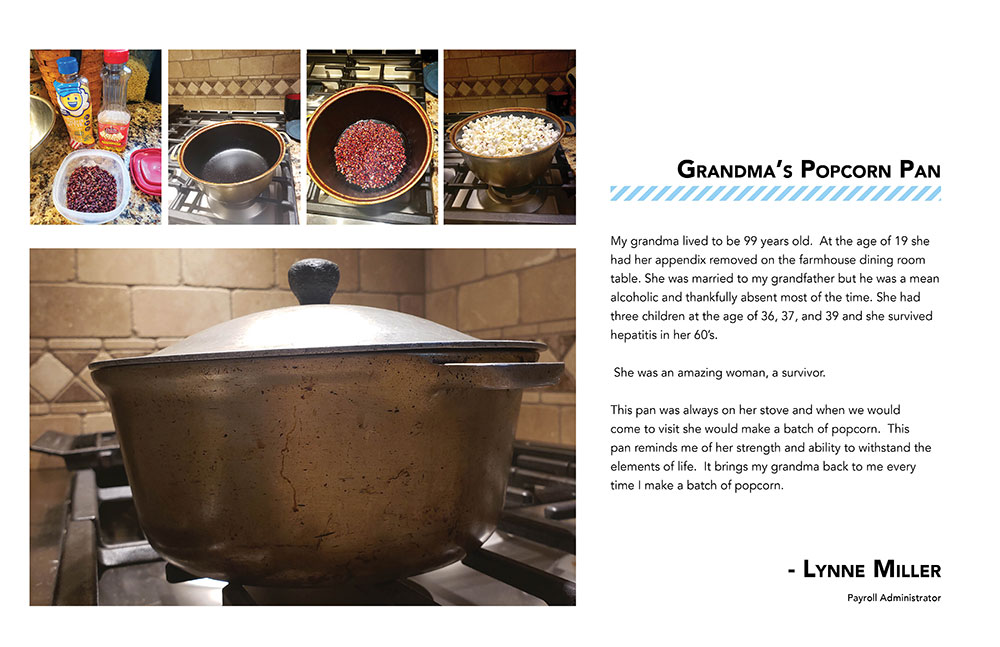

Mississippi Pot Roast
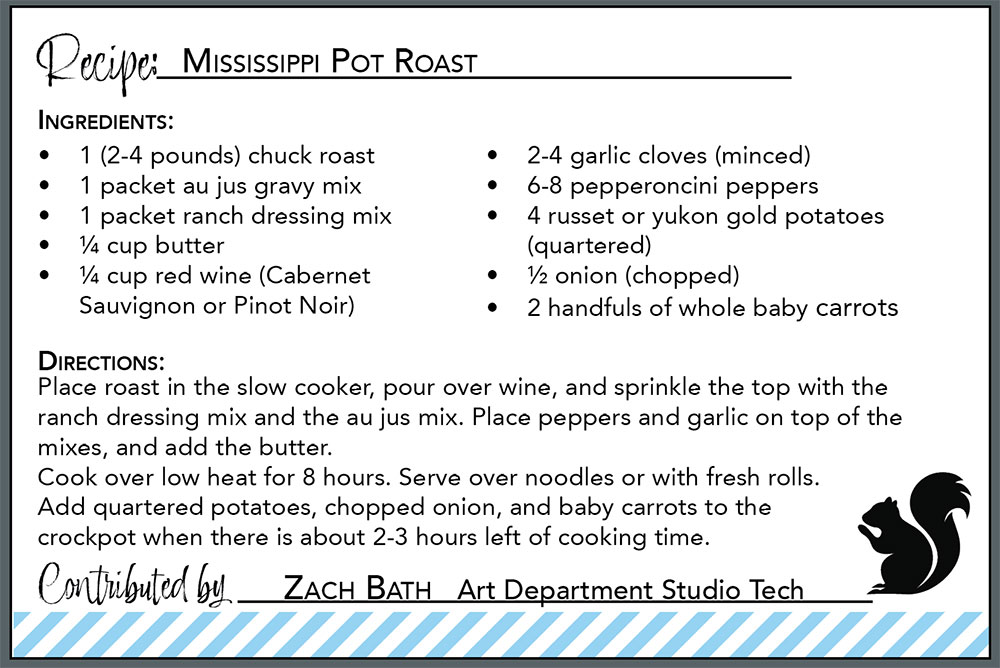
“I was raised in Wyoming, in a family that religiously hunts big game, and almost never purchased beef. Traditionally this pot roast recipe would utilize an elk roast, or a moose roast if we’re gettin real fancy, however a chuck roast will do you just fine.
When it came time for my mother’s only child to leave home for art school, she passed on to me a full kitchen’s worth of cookery and utensils, including her 1980’s 5-quart Rival Crockpot. This crockpot became the essence of my nourishment, particularly through graduate school.
Hands down, my favorite slow-cooker recipe is the “Mississippi” Pot Roast. Why it’s name for Mississippi, we do not know. As my mother will humbly admit, she first found the recipe on the back of a Hidden Valley Ranch packet, however it did lovingly receive her Italian zhuzh with additions of garlic, red wine, and double the veg.”
-Zach Bath-
Art Department Studio Tech
